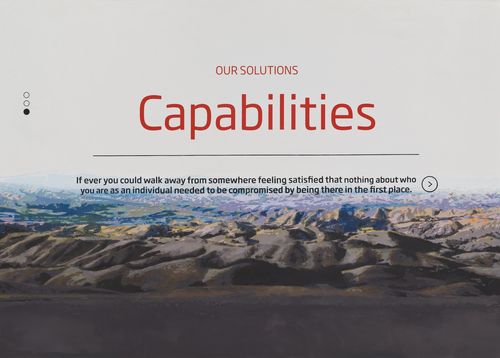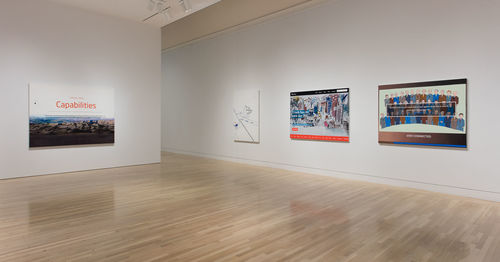
Joel Holmberg
Joel Holmberg was one a few dozen key contributors to Nasty Nets, a popular “surf club,” or artist-run blog, that lasted from 2006 to 2012. Within that time span the site and its bevy of contributors mined the Internet for all manner of quirky flotsam and jetsam. Given his stalwart engagement with the Internet, the newest of new media, Holmberg’s foray into painting is rather conspicuous. The aesthetic of these paintings, which depict the most rudimentary web templates, is readily identifiable as belonging to Web 2.0, or the so-called era of user-generated content. The templates in this instance are most often adapted from existing sites, whose source code Holmberg altered to create new compositions before rendering them in paint; furthermore, the addition of text reveals his deft skills as a satirist. His rendering of these dated templates in the time-honored medium of paint on canvas makes it clear that they belong to a recent past that for all intents and purposes can be considered ancient history.
The Internet has become an integral part of daily life and is now taken for granted. The artwork made in the wake of this global form of communication is forced to contend with this fact. The term post-Internet refers to the extent to which it is no longer new but rather a given condition. The metaphor of the window, for example, may have once been useful in describing painted pictorial space, but today the concept has become inseparable from Microsoft’s operating system. Given painting's incriminating role in the modernist tendency toward medium-specificity—or the inward look of a given medium at the processes specific to itself—post-medium is another way of saying post-painting. The Internet, however, is far more than the interface making up its readily identifiable aesthetic, raising a question: how does one represent the Internet given that it is not something you can see? According to Holmberg, the answer is to paint it. Not only does painting hold a significant stake in the realm of visual culture, but it can lend the Internet a kind of reflexivity that it could not otherwise achieve were one to try and merely represent it on its own terms.










